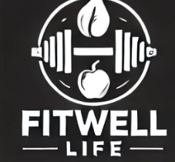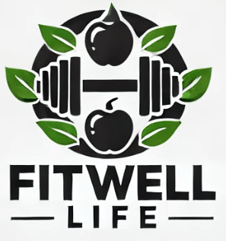Fitness and Health: The Essential Guide for Men Aged 35-55
1/2/20258 min read


Understanding the Importance of Fitness in Your 30s and 40s
As men transition into their 30s and 40s, the importance of maintaining fitness becomes increasingly salient. Regular physical activity plays a pivotal role in promoting overall health and combating the inevitable physiological changes that accompany aging. One of the primary reasons why fitness is crucial during this period is the increased risk of developing age-related health issues such as cardiovascular disease, diabetes, and obesity. According to the Centers for Disease Control and Prevention (CDC), nearly 70% of men aged 35 and older are considered overweight or obese, making it essential to adopt a proactive approach to fitness.
Moreover, staying active in your 30s and 40s not only contributes to physical health but also fosters mental well-being. Engaging in regular exercise can significantly enhance mood, alleviate symptoms of anxiety and depression, and improve cognitive function. Studies show that physical activity increases the release of endorphins, which are natural mood lifters. Consequently, fitness is a vital component for promoting emotional health, particularly as men often face increased stressors related to work and family obligations during this life stage.
Additionally, maintaining an active lifestyle in your 30s and 40s helps to preserve muscle mass and bone density, both of which begin to decline with age. Strength training and resistance exercises can mitigate this loss, reducing the risk of falls and fractures. Furthermore, regular cardiovascular workouts aid in maintaining a healthy weight and improving overall fitness levels, which are critical for optimal functioning in daily activities.
In essence, establishing a fitness routine during your 30s and 40s is integral to leading a balanced, healthy life. By prioritizing fitness, men can significantly enhance their physical health, emotional resilience, and overall quality of life as they age.
Setting Realistic Fitness Goals: The First Step to Success
Establishing realistic fitness goals is essential for men aged 35-55 as it lays a strong foundation for long-term success in their health journey. One effective method for goal setting is utilizing the SMART criteria, which emphasizes that goals should be Specific, Measurable, Achievable, Relevant, and Time-bound. By ensuring that each fitness objective meets these requirements, individuals can create clear targets that foster motivation and accountability.
Specific goals provide clarity about what you aim to achieve. For instance, instead of stating a vague intention to "get fit," a specific goal would be to “run a 5K in under 30 minutes.” Measurable goals allow you to track progress effectively. Utilizing metrics, such as body weight or the number of push-ups performed, can help you assess your advancements. Achievable goals are crucial to prevent discouragement; setting a target that is beyond reach can lead to frustration and a decreased desire to continue exercising.
It is also vital that goals are relevant to your personal circumstances, interests, and lifestyle. A fitness goal should enhance overall well-being rather than serve as an obligation. Lastly, by setting time-bound goals, such as completing a fitness challenge within a certain timeframe, individuals can create a sense of urgency that fosters consistency in their efforts.
Tracking progress can provide motivation and keep you aligned with your goals. Regular check-ins, whether they be weekly, monthly, or quarterly, allow for adjustments to be made as required. Additionally, maintaining flexibility in your goals is crucial, as life often presents unexpected challenges that may necessitate a reassessment of objectives. Embracing this adaptability ensures that you remain committed to your fitness journey without succumbing to undue stress or disappointment.
Creating an Effective Workout Routine: Key Components to Include
Designing an effective workout routine is crucial for men aged 35-55 to maintain overall fitness and health. An ideal routine should encompass four key components: strength training, cardiovascular exercise, flexibility, and balance work. Each component plays a vital role in enhancing physical health and mitigating the risks associated with aging.
Strength training is essential for building and maintaining muscle mass, which naturally declines with age. Incorporating exercises such as push-ups, squats, and dumbbell rows can help improve muscular strength. For beginners, starting with bodyweight exercises can effectively lay the groundwork, while those more advanced can shift to free weights or resistance bands to further challenge their muscles.
Cardiovascular exercise is equally important, as it supports heart health and aids in weight management. Activities like walking, cycling, or swimming can be excellent choices, as they cater to varying fitness levels. For individuals just beginning their fitness journey, brisk walking for 20-30 minutes several times a week can make a significant difference. More experienced individuals can include interval training, where periods of high intensity are alternated with recovery, to boost endurance further.
Flexibility exercises, such as stretching or yoga, are essential for maintaining a healthy range of motion and preventing injuries. Performing stretches targeting major muscle groups after workouts can increase flexibility over time, making daily activities more manageable. Similarly, incorporating balance exercises, such as standing on one leg or using a stability ball, can enhance core strength and stability, crucial for preventing falls as one ages.
To keep the workout routine engaging and effective, incorporating variety into the exercises is paramount. This not only helps to prevent boredom but also reduces the risk of overuse injuries. A balanced approach that alternates between different types of workouts can yield optimal results and promote adherence to the fitness regimen.
Nutrition Tips for Optimal Performance and Recovery
For men aged 35 to 55, maintaining optimal nutrition is a crucial aspect of achieving fitness goals and enhancing recovery. A balanced diet plays an instrumental role in supporting overall health, energy levels, and muscle repair. It is essential to focus on incorporating an array of nutrients, including protein, healthy fats, and carbohydrates, to fuel the body and aid in optimal recovery.
Protein stands out as a vital nutrient, especially for those involved in regular physical activity. It is responsible for repairing and building muscle tissues. Men in this age bracket should aim to include lean protein sources such as chicken, fish, legumes, and low-fat dairy in their meals. Additionally, incorporating protein-rich snacks throughout the day can bolster muscle recovery and maintain energy levels.
Healthy fats also merit attention in any nutrition plan. Incorporating sources like avocados, nuts, seeds, and olive oil supports heart health and can provide sustained energy. It's important to opt for unsaturated fats over saturated fats, as they contribute positively to overall well-being. Moreover, the inclusion of whole grains for carbohydrates can enhance performance during exercise. Foods such as quinoa, brown rice, and sweet potatoes provide the necessary fuel to power workouts and contributing to muscle glycogen stores, which are crucial for recovery.
Moreover, hydration should not be overlooked. Adequate fluid intake is essential for optimal performance during workouts and facilitates efficient recovery. Water should always be the primary source of hydration, while electrolyte-rich beverages can be beneficial during and after vigorous exercise sessions.
Meal planning is another strategy that can help men in this age group make healthier food choices. Preparing meals in advance reduces the likelihood of opting for fast food or less nutritious options, ultimately leading to better adherence to a balanced diet.
Incorporating Fitness into a Busy Lifestyle
In today's fast-paced world, men aged 35-55 often struggle to find time for regular exercise amidst their demanding schedules. However, maintaining fitness is crucial for overall health and well-being. There are several strategies to effectively integrate physical activity into a busy lifestyle, ensuring that individuals can prioritize their fitness without feeling overwhelmed.
One practical approach involves making exercise a non-negotiable part of daily routines. Setting aside specific times for workouts, even if they are brief, can help in establishing a consistent regimen. For example, early morning sessions can energize the day ahead, while lunchtime workouts can serve as a refreshing break from work responsibilities. Additionally, embracing time-efficient workouts such as High-Intensity Interval Training (HIIT) allows for a full-body exercise routine within a shorter timeframe, making it easier to fit fitness into busy schedules.
Incorporating physical activity into daily activities can also be an effective way to stay active. Simple changes, such as opting for stairs over elevators, or taking walking meetings, can accumulate significant amounts of physical activity throughout the day. Another option is to embrace hobbies that involve movement, such as gardening or playing sports with friends. This not only enhances fitness levels but also brings social engagement into the mix, making it more enjoyable.
Moreover, technology can play a role in maintaining fitness commitment. Utilizing fitness apps or wearable devices can help track progress and motivate individuals to stay active. Furthermore, routine check-ins with workout buddies can foster accountability and provide encouragement. By employing these strategies, men in this age group can effectively integrate fitness into their lifestyles, promoting a healthier and more balanced approach to physical well-being.
Maintaining Motivation: Overcoming Common Obstacles
Maintaining motivation in a fitness journey, particularly for men aged 35-55, can be challenging due to various common obstacles. These hurdles often include lack of time, injuries, and decreasing motivation levels. Recognizing these challenges is the first step toward overcoming them. By implementing practical strategies, individuals can navigate these issues effectively.
One effective approach is finding a workout buddy. Exercising with a partner not only provides accountability but also makes workouts more enjoyable. A buddy can encourage you on tough days, share in victories, and help maintain a consistent routine. Additionally, joining a fitness community can enhance motivation. Engaging with like-minded individuals fosters a supportive environment and allows for sharing tips and experiences, which can reinvigorate enthusiasm for fitness.
Another significant hurdle is the perception of time constraints. It is crucial to remember that even short workout sessions can be effective. Prioritizing physical health by scheduling regular sessions in advance can help overcome this obstacle. Combining physical activity with daily responsibilities can also squeeze in workouts without feeling overwhelmed. For instance, consider incorporating active family outings or brisk walks during lunch breaks.
Injuries can frequently derail fitness goals. However, adapting routines to accommodate these injuries is vital rather than allowing them to halt progress entirely. Working with a fitness professional can provide tailored exercises that reduce stress on injured areas. Finally, implementing a rewarding system can incentivize progress. Setting and achieving smaller goals and rewarding oneself can boost morale and reinforce motivation during challenging phases.
Persistence is key, and reminding oneself of the benefits of a healthy lifestyle can serve as motivation. By employing these strategies, men can not only overcome obstacles but also sustain their commitment to fitness and health.
Celebrating Milestones and Assessing Progress
As men enter the age bracket of 35 to 55, it becomes crucial to recognize and celebrate fitness milestones. Achievements, both large and small, serve as motivational boosters on the journey towards improved health. Whether it is successfully completing a challenging workout, achieving personal bests in strength training or endurance exercises, or simply committing to a regular fitness routine, all these accomplishments deserve recognition. Celebrating such milestones not only reinforces positive behavior but also enhances one’s overall mental well-being.
Tracking progress is an essential aspect of any fitness regimen. By employing various methods to assess physical capabilities, men can gain clearer insights into their health journeys. Common assessment techniques include fitness tests that measure cardiovascular endurance, strength, flexibility, and body composition. Tracking body metrics, such as weight, waist circumference, or body fat percentage, can also provide valuable feedback on fitness levels. Keeping a journal or utilizing fitness apps to log workouts allows for an easy way to visualize progress, helping individuals stay accountable and motivated.
Moreover, reflection plays a vital role in sustaining long-term motivation. Taking time to consider the physical and mental transformations that have occurred fosters a deeper appreciation for the hard work put into fitness efforts. It offers an opportunity to shift focus from the scale to more significant markers of health, such as increased energy levels, improved mood, or enhanced daily functionality. By actively engaging in reflection, individuals can cultivate a positive mindset that encourages continuity in their fitness pursuits.
In summary, celebrating milestones and consistently assessing progress are indispensable elements in the quest for fitness and health for men aged 35 to 55. By acknowledging achievements and utilizing effective assessment techniques, individuals can reinforce their commitment to a healthier lifestyle while promoting sustained motivation.
Strength for Life: A Midlife Fitness Guide
Discover how to maintain and build strength with this powerful weightlifting routine designed for men aged 35-55. Stay fit, stay strong

Wellness
Your source for health, fitness, and nutrition.
Fitness
Nutrition
© 2024. All rights reserved.


